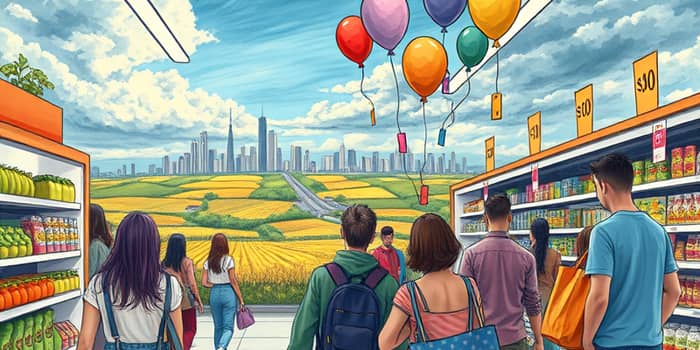
Across developed economies, consumers are grappling with a stark reality: prices at the grocery store are rising faster than overall inflation. As headline rates moderate, the cost of food continues to climb, straining household budgets and challenging policymakers worldwide.
Recent data from the OECD highlight this persistent imbalance. In March 2025, the OECD’s food inflation rose to 4.8% in March, surpassing the 4.2% increase in general consumer prices.
Since December 2019, average price levels across OECD nations are 32.7% higher, underscoring the lingering impact of supply shocks, energy volatility, and geopolitical tensions on everyday essentials.
Looking back over the last six years, the gap between food and overall inflation has been most pronounced during the pandemic recovery and the energy-driven surges of 2022–2023.
*Data for March 2025 (OECD)
During 2022 and 2023, food prices accelerated above the general index by nearly 2–3 percentage points annually, driven by unprecedented global disruptions.
The surge in food inflation reflects a convergence of short-term shocks and long-term structural pressures. Key factors include:
Individual categories can see even sharper spikes: eggs soared 41.5% year-over-year in May 2025, while coffee rose 11.5% and beef/veal jumped 8.6%.
In the United States, the overall CPI grew 2.4% year-over-year in May 2025. However, the food CPI hit 2.9%, reflecting both grocery and restaurant price gains.
Food-at-home costs climbed 2.2%, while dining out surged 3.8%. Within that, full-service meals rose 4.2% and limited-service meals 3.5%, forcing families to choose between stretching supermarket budgets or cutting back on meals out.
Across the EU, overall inflation peaked at 9.2% in December 2022, falling to 2.4% by late 2024. Yet food and non-alcoholic beverage prices saw a rollercoaster, surging to 19.2% in early 2023 before moderating to under 2% in April 2024.
In the UK, headline inflation reached 2.5% by December 2024, with food inflation at 2.0%. Despite this slowdown, food prices are still rising—they remain 27–29% above pre-crisis levels.
Persistently high food costs erode disposable income, and lower-income households under strain face tough trade-offs between nutrition and other essential needs. Policymakers must balance support for vulnerable groups with measures to cool food price growth.
Potential interventions include targeted subsidies for healthy staples, strategic reserves to stabilize commodity prices, and investments in resilient supply chains that reduce future volatility.
Even as broader inflationary forces persist, there are practical steps individuals and communities can take to navigate rising food costs:
The persistent gap between food inflation and general CPI underscores the unique challenges facing the global food system. While headline rates may ebb and flow, the cost of feeding families remains on an upward trajectory.
Addressing this requires both immediate relief for those most affected and long-term reforms to build a significant cumulative cost impact that deepens food insecurity. By combining consumer resilience, community action, and strategic policymaking, societies can begin to close the gap and foster a more stable, equitable food future.
References













